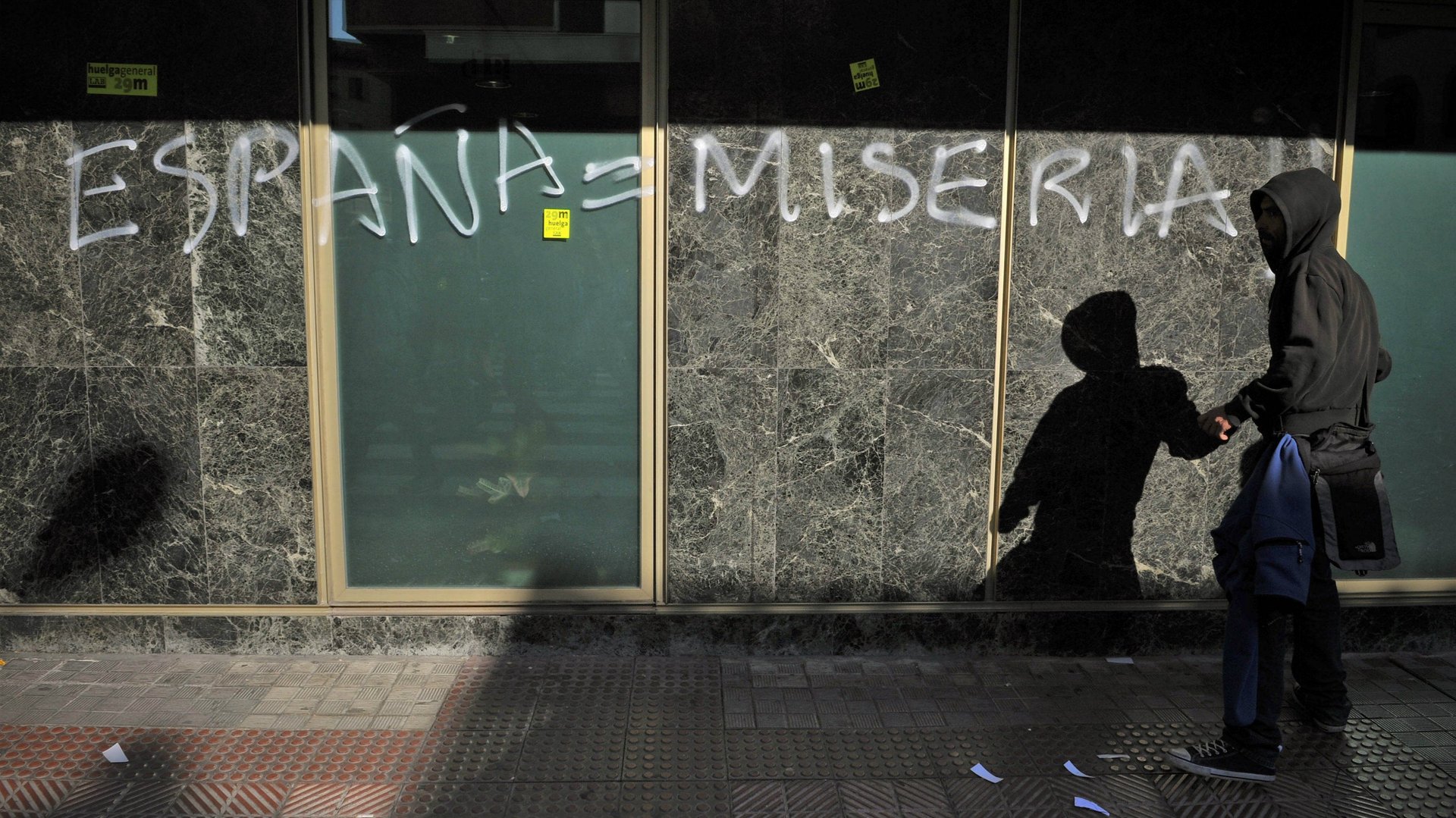Spain is running out of people to borrow from after raiding its own pensions piggy bank
The Spanish government has been quietly and aggressively draining its pension guarantee program to buy its own bonds (paywall), reports the Wall Street Journal, potentially putting future pension payouts at risk. The government has tapped the Social Security Reserve Fund so many times—€4 billion ($5.3 billion) to cover pensions last November and another €3 billion to pay for “unspecified treasury needs” in September, as examples—that government has had to raise the annual legal limit on emergency withdrawals. Currently, some 90% of the €65 billion fund has gone into risky Spanish debt, says the WSJ.


The Spanish government has been quietly and aggressively draining its pension guarantee program to buy its own bonds (paywall), reports the Wall Street Journal, potentially putting future pension payouts at risk. The government has tapped the Social Security Reserve Fund so many times—€4 billion ($5.3 billion) to cover pensions last November and another €3 billion to pay for “unspecified treasury needs” in September, as examples—that government has had to raise the annual legal limit on emergency withdrawals. Currently, some 90% of the €65 billion fund has gone into risky Spanish debt, says the WSJ.
Setting aside the alarming depletion of social security reserves, as well as the question of whether forced lending in one’s domestic market is a great use of capital, the more pressing worries are where the government will turn next in an emergency, as a recession continues and austerity measures continue to bite; and who exactly will buy the estimated €207 billion in debt the Spanish government plans to issue this year.
Spain isn’t the only country to tap its pension fund reserves to buy its own debt. Governments in Italy and France have done the same to keep themselves afloat. But economist Paul Donovan of UBS says Spain’s situation is more precarious, because it has fewer resources.
Mired in recession, the Spanish government can only generate so much revenue. The nation is borrowing instead from its own economy, but this has its limits. While Italians are relatively wealthy, Spaniards—who were under authoritarian rule from the mid-1930s until the mid-1970s—are not. Donovan says that unlike in Italy, where he estimates private sector wealth at more than 400% of GDP, or more than three times the national debt, in Spain it is more like 150% of GDP, or one-and-a-half times the national debt. “If Italy wants to mobilize domestic savers to buy bonds, it only has to convince one in three people,” he says. “If Spain wants to get domestic savers to buy bonds, it has to pretty much convince all of them.”
So where can Spain turn next? It has nearly exhausted secret sources of cash like the Social Security Reserve Fund. And indeed, says the WSJ, using those reserves to buy its own bonds likely violated a rule to buy securities only “of high credit quality and a significant degree of liquidity.” Commercial banks have already substantially increased their sovereign bond holdings, and though they have no interest in seeing Spain’s economy tank, they already own about a third of the government debt in circulation. And non-Spanish buyers are losing interest in Spanish bonds; at least, that was the case in December, when a disappointing sovereign bond auction left the market speculating about an international aid request.
Spanish officials have, reports the WSJ, defended using the pension reserve fund to buy high-risk bonds, saying it works as long as Spain can keep tapping financial markets until the debt crisis eases and the economy recovers. We’ll have some idea how well that strategy might pan out at its first public debt auction of the year, scheduled for next week. If it doesn’t go well, an international bailout could be just around the corner.